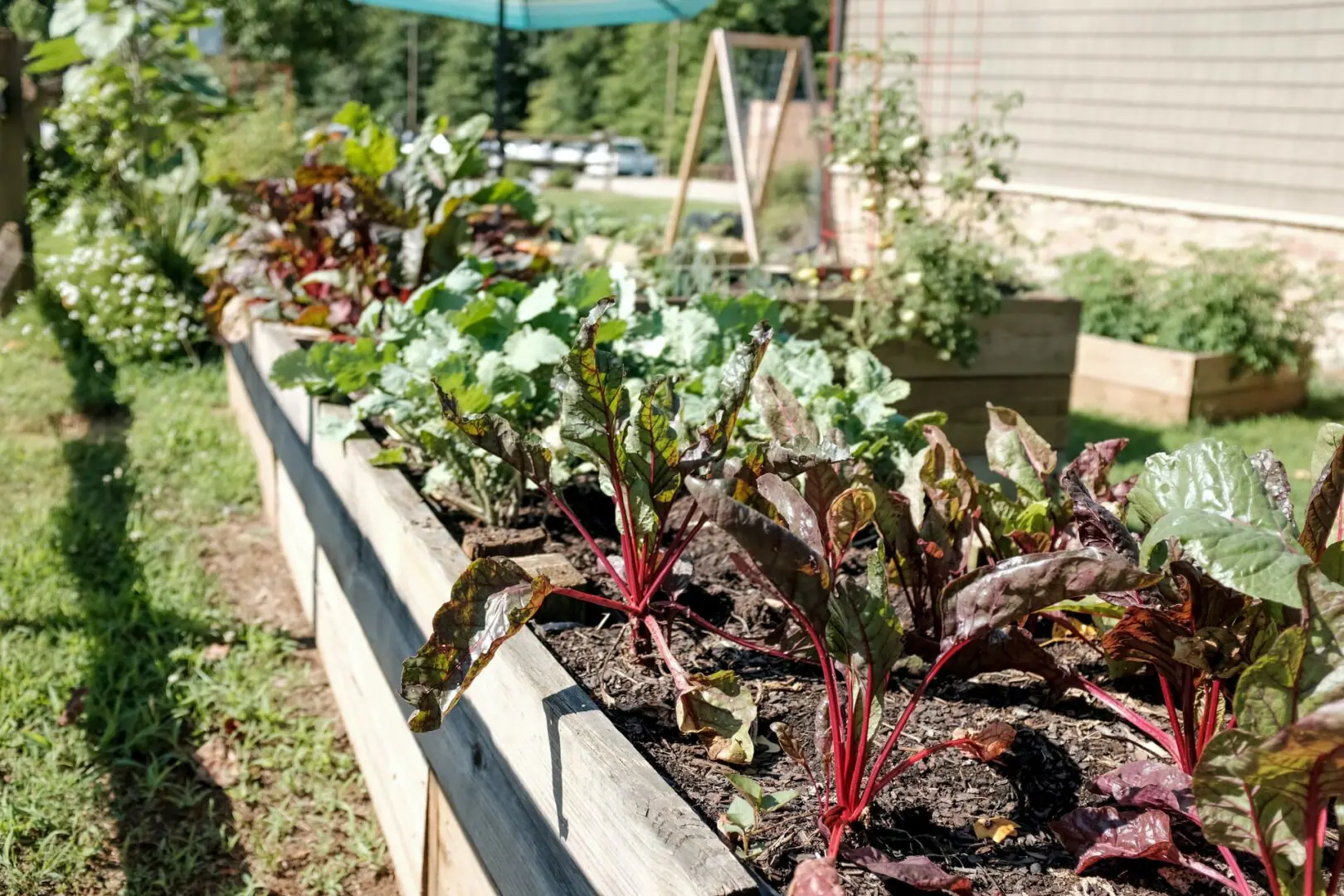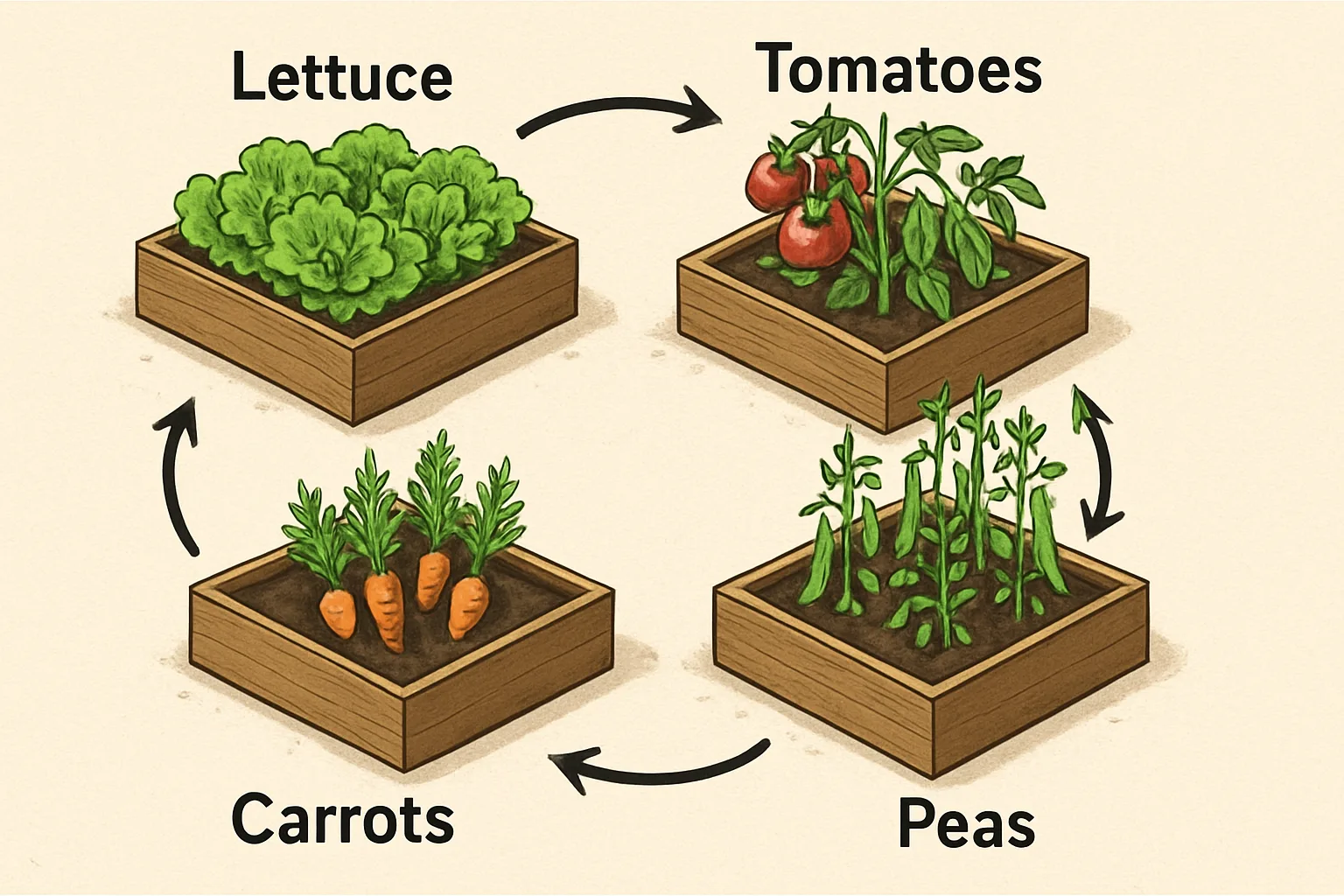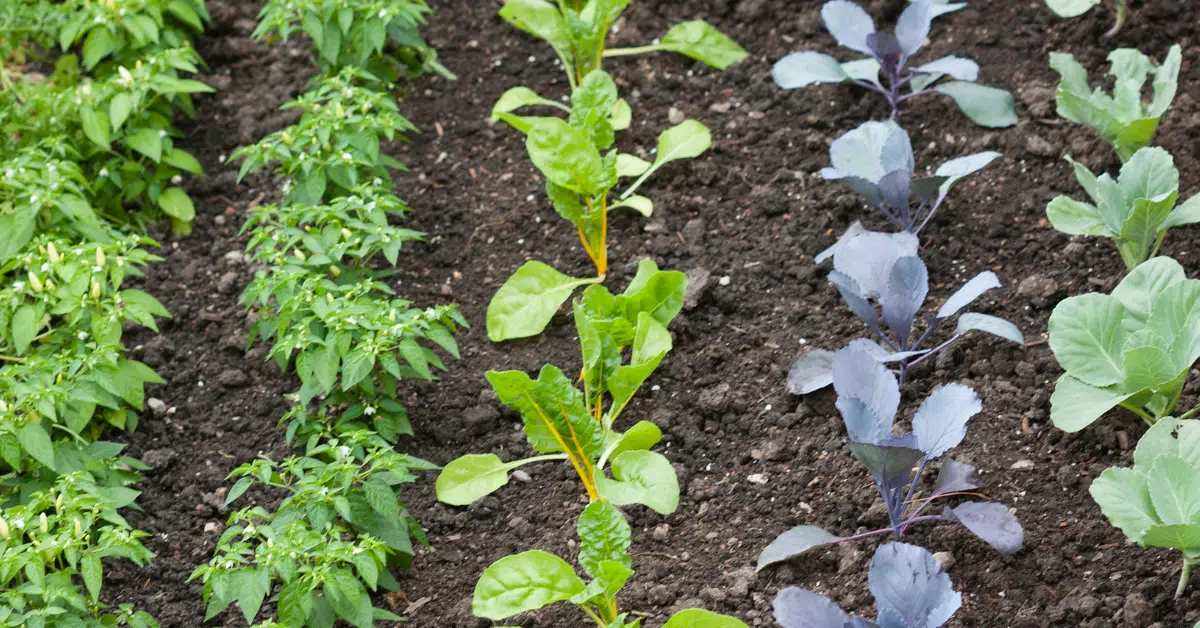There’s something deeply grounding about growing your own vegetables. Watching seeds sprout, harvesting crisp greens from your garden, and eating food grown by your own hands connect you to nature in the most rewarding way. Whether you’re starting a small courtyard garden in Cape Town or a generous veggie patch in the Winelands, these tips will help you create a thriving, sustainable vegetable garden from the ground up.
Plan Your Vegetable Garden Carefully
Every great garden starts with a good plan. Before you touch the soil, take time to think through what you want to grow and where. Sketch your space, note where the sun rises and sets, and observe how shadows move during the day.
Choose vegetables that suit your household’s eating habits – there’s no sense planting rows of aubergines if no one eats them. Think about balance: a mix of quick crops (lettuce, spinach, herbs) and slower growers (tomatoes, peppers, carrots) keeps your garden productive across seasons.
Contour Tip: Start by observing your space for a week before planting. You’ll notice how the light changes, where wind funnels through, and how water drains after rain. That insight is gold.

Choose the Best Location for Your Vegetable Garden
Sunlight is your garden’s energy source. Most vegetables need at least six hours of direct light daily. In South Africa, the best orientation is north-facing, which ensures consistent sunshine throughout the year. East-facing beds catch gentle morning rays – perfect for leafy greens that wilt easily – while west-facing beds suit heat-lovers like brinjals and chillies.
Keep your beds close to a water point; if you’re using a hose or watering can, proximity saves effort. If you plan to install drip irrigation, factor that into your layout early.
Wind is often underestimated. In coastal regions, the south-easterly can strip moisture from leaves and stunt growth. Create natural windbreaks with hardy herbs or mesh fencing.
Q: Can I grow vegetables in partial shade?
A: Yes. Spinach, lettuce, rocket, parsley, and many Asian greens tolerate four to five hours of sun daily.

South African Planting Guide – When to Sow What
| Crop | Cape Town (Coastal Winter Rainfall) | Highveld (Summer Rainfall Region) |
|---|---|---|
| Lettuce & Spinach | Sow Mar – Aug • Harvest May – Oct | Sow Aug – Apr • Harvest Oct – Jun |
| Tomatoes | Sow Aug – Oct • Harvest Dec – Apr | Sow Sep – Nov • Harvest Jan – May |
| Carrots & Beetroot | Sow Feb – Aug • Harvest Jun – Nov | Sow Sep – Apr • Harvest Dec – Jun |
| Beans & Peas | Sow Aug – Dec • Harvest Nov – Mar | Sow Oct – Feb • Harvest Jan – Apr |
| Onions & Garlic | Sow Mar – Apr • Harvest Oct – Dec | Sow Apr – May • Harvest Dec – Feb |
| Herbs (Basil, Parsley, Coriander) | Basil Sep – Jan • Parsley Year-round • Coriander Mar – May | Basil Oct – Feb • Parsley Year-round • Coriander Mar – Jun |
Contour Tip: Plant cool-season crops just after peak heat, and heat-lovers right after the last frost.
Prepare Soil for a Healthy Vegetable Garden
Your soil is the living foundation of your garden. Healthy soil equals healthy plants. Begin by clearing weeds and loosening compacted ground to about 30 cm deep. You’re not just digging – you’re aerating and creating pathways for roots, worms, and microbes.
Add organic matter generously. Compost, well-rotted manure, or worm castings feed beneficial microorganisms that break down nutrients for plants. If your soil is sandy (common in the Western Cape), mix in compost and coconut coir to help it retain moisture. For heavy clay soils, add coarse sand and compost for better drainage.
Avoid over-digging; the no-dig method protects the natural structure of your soil. Spread compost and mulch over the surface, and let earthworms do the mixing. This approach keeps microbial life intact and locks in carbon.
Contour Tip: Mix a handful of crushed eggshells and a scoop of wood ash into the topsoil before planting fruiting crops like tomatoes and peppers. Both add calcium and potassium – essential for strong stems and vibrant fruit.
Q: What’s the best compost mix?
A: Combine equal parts “green” materials (fresh scraps, grass clippings) and “brown” ones (dry leaves, cardboard). Keep it moist and aerated.

Start Small When Beginning a Vegetable Garden
It’s easy to get excited and plant everything under the sun. But small, well-managed gardens always outperform sprawling, neglected ones. A single 1 × 2 metre bed can produce a surprising amount of food if you care for it consistently.
Start with a few dependable crops like spinach, lettuce, beans, and tomatoes. Learn how your garden behaves through one full season – how the sun tracks, how pests appear, how soil responds – before you expand.
Contour Tip: Every new gardener dreams of abundance. The secret? Consistency over scale. Master watering, feeding, and pest control in a small space first.

Use Raised Beds for Efficiency
Raised beds improve drainage, warm faster in spring, and reduce compaction from foot traffic. They’re also easier on your back.
Build beds from untreated wood, brick, or corrugated metal. Aim for a depth of at least 30 cm and a width no more than 1.2 m so you can reach the centre easily. Line the bottom with cardboard to smother weeds, then fill with alternating layers of compost, topsoil, and mulch.
Mulch immediately after planting – it conserves water, prevents weeds, and keeps roots cool.
- Row depth: 30 cm soil + 5 cm compost/mulch top-up.
- Spacing: 15–20 cm for leafy plants; 30 cm for roots; 45 cm for fruiting crops.
- Windbreak: Plant taller crops (tomatoes, beans) on the south-westerly edge in coastal gardens.
Contour Tip: If you only have morning sun, swap beans for chillies or peppers – they’ll still thrive.

Group and rotate Crops for a Productive Vegetable Garden
Crop rotation prevents soil exhaustion and keeps pests guessing. Different plant families draw and return different nutrients. A simple four-bed rotation works beautifully:
- Leafy crops – lettuce, spinach, cabbage
- Fruiting crops – tomatoes, peppers, brinjals
- Root crops – carrots, onions, beetroot
- Legumes – beans, peas (they fix nitrogen)
Rotate clockwise each season to maintain soil health.

Contour Tip: Label each bed or sketch a quick plan in your notebook – you’ll thank yourself next year.
Water Efficiently
Water is precious, especially where droughts are frequent. Smart watering makes the difference between a struggling and a thriving garden.
Use drip irrigation or soaker hoses to deliver water straight to roots. If you water manually, use a watering can fitted with a rose to mimic gentle rain. Water early in the morning so leaves dry before midday, preventing fungal disease.
Clay pot irrigation (the olla method) is brilliant for small beds. Bury unglazed terracotta pots between plants, fill them with water, and cap with a lid or stone. The pots slowly release moisture through their porous walls as the soil dries.

Quick Water-Budget Guide
| System | Flow rate (L/hr per emitter) | Duration per session | Water delivered per plant | Frequency |
|---|---|---|---|---|
| Drip line | 2 L/hr | 30 min | ≈ 1 L | 3 × per week (summer) / 1 × per week (winter) |
| Soaker hose | 4 L/m / hr | 25 min | ≈ 1.5 L per m | 2 × per week |
| Clay pot (olla) | Passive seep ≈ 0.5 L/day | Top up every 3–4 days | 0.5 L/day | Continuous |
Contour Tip: A mature 1 × 2 m bed with around 20 plants uses roughly 40–45 L per week in midsummer – about one standard watering-can per day depending on mulch thickness and rainfall.
Q: How often should I water my vegetable garden?
A: In summer, deep-water two to three times a week rather than sprinkling daily; roots grow stronger searching for moisture.

How to Feed the Soil in Your Vegetable Garden
Plants are what they eat, but soil is the true stomach of your garden. Instead of relying on chemical fertilisers, focus on building living, nutrient-rich soil.
Feed regularly with compost, worm tea, or liquid seaweed. These boost plant immunity and microbial diversity. A fortnightly feed is plenty – steady nutrition beats sudden spikes.
If leaves yellow, check for nitrogen deficiency; if new growth curls or discolours, calcium may be lacking. Correct with organic sources like compost, crushed shells, or wood ash.

Why Mulching Helps Your Vegetable Garden Thrive
Mulch locks in moisture, suppresses weeds, and keeps soil temperature steady. Use straw, shredded leaves, or bark chips – anything organic that breaks down slowly.
In the Western Cape’s hot summers, mulch saves water; in cooler regions, it protects roots from frost. Always keep mulch a few centimetres away from stems to prevent rot.
Contour Tip: Add a fresh layer every few weeks. As old mulch decomposes, it feeds the soil beneath.

Keep Pests Under Control Naturally
Every garden has pests – the goal isn’t eradication, it’s balance. A healthy garden invites predators that handle pests for you.
Encourage beneficial insects by planting nectar-rich flowers like marigolds, borage, and calendula. Interplant basil near tomatoes to deter aphids, and onions near carrots to confuse root flies.
For infestations, use natural sprays: a mix of grated pure soap and water for aphids, or neem oil for whiteflies and mites. Always spray in the evening when bees are inactive.
Contour Tip: Stressed plants attract pests. Keep your soil healthy, water consistently, and your plants will naturally resist attack.

Harvest Frequently
The more you pick, the more your plants produce. Beans, cucumbers, and courgettes stop flowering if the fruits mature too long. Harvest early in the morning while leaves are crisp and full of moisture.
Cut rather than tug – clean cuts heal faster and prevent stem damage.

Use Succession Planting
Want constant harvests instead of feast and famine? Plant in intervals. Sow a small patch of lettuce every two weeks, or stagger carrots and beans. As one crop finishes, another is ready, keeping your garden productive year-round.
Succession planting also spreads risk: if pests or weather wipe out one batch, the next is already growing.

Practise Companion Planting
Certain plants help each other thrive. Combine herbs, vegetables, and flowers for balance:
- Tomatoes + basil: flavour boost and pest deterrent
- Carrots + onions: mutual pest protection
- Spinach + beans: shade and nitrogen sharing
- Cabbage + dill: attract beneficial insects
Avoid pairing crops that compete, like onions with beans or potatoes with tomatoes.

Compost Kitchen Waste
Your kitchen holds the key to rich soil. Save vegetable peels, eggshells, coffee grounds, and tea leaves. Alternate green waste (moist, nitrogen-rich) with brown waste (dry, carbon-rich). Keep the heap aerated with a garden fork, or use a compost tumbler if space is tight.
Urban gardeners can try bokashi bins – sealed containers that ferment food waste with bran. Once full, the mix can be buried in soil or added to compost to decompose quickly.

Protect Crops from Weather
Extreme weather can undo months of effort. Use 30 % shade cloth in summer to reduce scorch, and frost fleece or tunnels in winter to trap warmth. For wind protection, build low screens or plant dense herbs like rosemary or lavender along the edge.
Raised beds drain quickly after heavy rain, preventing root rot – another reason they’re so effective.
Keep Notes and Observe
The best gardeners are attentive observers. Keep a notebook or digital diary where you record planting dates, rainfall, pests, and harvest yields. Over time, you’ll spot patterns – like which bed dries out fastest or which variety resists aphids best.
Contour Tip: Gardening is slow science. Your notes become a personalised manual for success.

Share Your Produce
When your baskets overflow, share the bounty. Trade veggies with neighbours, gift herbs to friends, or start a small seed swap. Growing food builds community – and nothing tastes better than generosity.
Final Thoughts
Creating your own vegetable garden is a journey – one that rewards patience with beauty and nourishment. Each season teaches you something new about your soil, your climate, and yourself. By feeding your soil, conserving water, and working with nature instead of against it, you’ll grow far more than food – you’ll grow resilience.

Frequently Asked Questions About Vegetable Gardening in South Africa
Thinking of growing your own food? These quick answers cover the most common questions about planning, planting, watering, and maintaining a thriving vegetable garden — tailored for South African conditions.
When is the best time to start a vegetable garden?
In most regions, early spring is ideal, but coastal areas can grow year-round if you choose the right seasonal crops.
Which vegetables grow best in Cape Town’s climate?
Leafy greens, tomatoes, beans, peppers, and herbs thrive. Root crops like carrots prefer cooler months.
How can I garden in a small space?
Use vertical planters, hanging baskets, or deep containers. Focus on compact crops like lettuce, herbs, and cherry tomatoes.
How do I keep my vegetable garden organic?
Feed soil with compost and worm tea, avoid synthetic fertilisers, and use companion planting to reduce pests.
What vegetables are easiest for beginners?
Spinach, lettuce, beans, courgettes, and radishes – they’re hardy, fast-growing, and forgiving.
